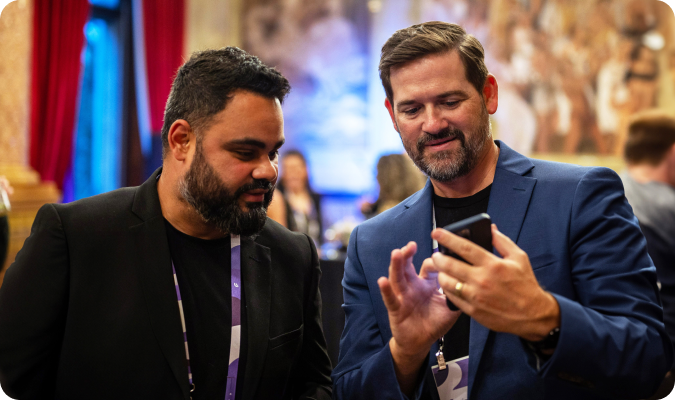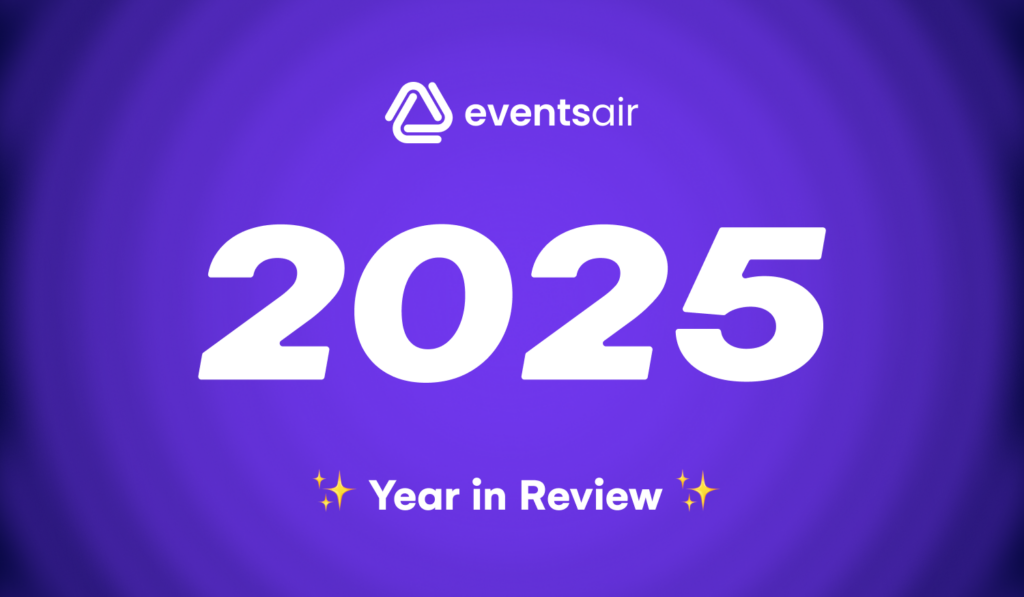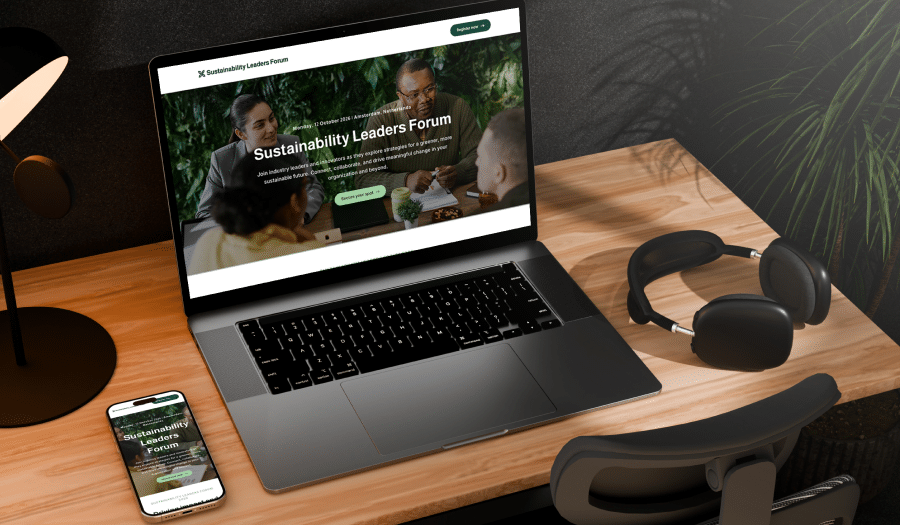
Event sponsorship can be a powerful way to generate additional revenue for an event, which in turn can mean more to invest in creating a memorable experience for attendees. However, it can be challenging to find the right sponsors for an event and to even more challenging to ensure that the sponsorship is effective in driving a return on investment (ROI) for sponsors.
In this article, we will explore the best ways to maximize event sponsorship opportunities using technology to connect sponsors with the right attendees and track ROI. We will cover how to get sponsors, what to offer sponsors, and how to measure the success of your sponsorship efforts.
What is event sponsorship?
Before we dive into how to maximize event sponsorship opportunities, let’s take a step back and define what event sponsorship is. Event sponsorship is when a company or organization provides financial or in-kind support to an event in exchange for recognition and exposure to the event’s attendees. Sponsorship can come in various forms, including:
- Title sponsorship: The highest level of sponsorship, where the sponsor’s name is prominently featured in the event’s title. This level of sponsorship usually comes with exclusive marketing and branding opportunities.
- Venue sponsorship: A sponsor provides financial or in-kind support in exchange for the right to brand a specific area of the event, such as the main stage or VIP area.
- Product sponsorship: A sponsor provides products, such as food or beverages, to be consumed or sold at the event. In exchange, the sponsor is typically recognized in some way, such as through signage, announcements, on your attendee app (which is a great hook for sponsors as you can link to their site directly) or within the product such as on coffee cups.
- Speaker or session sponsorship: A sponsor provides financial support for a specific session or speaker at the event. In exchange, the sponsor may be able to provide input on the content, speak on a panel or have their branding displayed during the session.
- Supporting sponsorship: A lower level of sponsorship, where the sponsor provides financial or in-kind support in exchange for general recognition at the event, such as through signage or on the event’s website.
- Media sponsorship: A sponsor provides media support, such as advertising or promotion, in exchange for recognition at the event.
These are just a few examples of the types of event sponsorship that exist, and each event may offer different options for sponsors. The key is to help companies find the sponsorship level that best aligns with their organization’s goals and budget.
How do you get your event sponsored?
As an experienced event planner, you already know how important event sponsorship is for the success of your events. But finding the right sponsors can be a daunting task, even for seasoned professionals like you. Here are several key elements that can help you secure sponsorships for your event.
Reaching out to companies for sponsorship
When it comes to reaching out to companies for sponsorship, it’s important to have a well-crafted sponsorship pitch that highlights the value of investing in your event. Here are some key elements that should be included in your pitch:
Comprehensive event description
Your event description should be clear and detailed, including the date, time, location, and other important information. It should also outline the purpose of the event, target audience, and expected attendance.
Reasons to sponsor
It’s crucial to articulate the reasons why the sponsor should get involved in your event. This includes describing the benefits of sponsorship, such as exposure to a specific demographic or industry, and outlining the value that the sponsor will receive from the investment.
Attendee demographics
It’s also important to provide details on the attendees expected to be at the event, including gender, age, industry, job title, and other relevant information. This will help the sponsor understand the potential audience and how it aligns with their target market.
Examples of visibility
You should provide examples of the visibility the sponsor can expect to receive at the event. This includes any potential branding opportunities such as signage, logos, promotional materials, or product placement.
Engaging sponsorship packages
Lastly, you should present engaging sponsorship packages that are tailored to meet the needs of potential sponsors. This may include tiered sponsorship levels with different benefits at each level, or customized packages that meet the unique needs of the sponsor.
Remember, having all the relevant information and documents ready to go can help streamline the negotiation process and increase your chances of securing sponsors. If you’re looking for additional support, consider using an innovative event management platform like EventsAir to empower your sponsorship potential and maximize ROI for your event.
Targeted sponsorship packages
Creating highly targeted sponsorship packages is a crucial step in securing sponsors for your event. It’s important to provide sponsors with the information and metrics they need to understand the potential benefits of sponsoring your event. This information will be different from what is provided to attendees and should include data such as attendee demographics, engagement metrics, and visibility opportunities.
The sponsorship package should also include engaging and creative elements that showcase the value of sponsoring your event. This can involve a degree of collaboration between the event organizer and the sponsor to ensure that the package is tailored to the sponsor’s specific needs and goals. By involving sponsors in the creative process, you can not only create a more effective sponsorship package but also build ongoing relationships with sponsors that can benefit future events. Providing comprehensive information and engaging creative elements can help sponsors make the leap to support your event and contribute to its success.
Understand potential partners
To successfully secure event sponsorships, it’s important to understand your potential partners and what they’re looking to achieve through sponsorships. Take the time to research the companies you’re considering approaching and consider factors such as their size, past sponsorship history, and likely objectives. By understanding these factors, you can create a sponsorship offer that speaks directly to their goals and aligns with their values. This will not only increase your chances of securing the right sponsors but also improve the overall quality of your offer.
Show how sponsors will generate ROI
While most sponsors acknowledge that events provide great branding opportunities, ultimately they want to know if the numbers add up. When creating sponsorship packages, it’s important to demonstrate how sponsors will receive a return on their investment (ROI). Some key ways to provide sponsors with this information include:
- Price: Provide a breakdown of the sponsorship costs and how the sponsor’s investment will be allocated across various benefits.
- Visibility: Highlight how the sponsor’s brand will be promoted and seen by attendees, both in-person and through digital channels, such as social media and event apps.
- Overall attractiveness: Explain how the sponsor’s involvement will increase the overall appeal of the event to attendees and create a more engaging experience.
- Engagement: Showcase the opportunities for the sponsor to engage directly with attendees, such as through hosting a booth or providing a keynote speaker. This is likely the most valuable benefit for sponsors.
- Collaterals: Provide examples of branded collaterals that the sponsor will receive, such as signage, swag, or marketing materials.
By clearly articulating these benefits and tying them to the sponsor’s ROI, you can make a more compelling case for their involvement.
Maximize sponsor ROI with tech
In today’s tech-savvy world, it’s important to leverage technology to maximize the ROI for your sponsors. Some key examples of how to do this include:
- Event management software that provides real-time data on attendance, engagement, and behavior, allowing sponsors to make data-driven decisions.
- Mobile apps that allow sponsors to engage directly with attendees, providing personalized experiences and promoting their brand.
- Social media platforms that allow for targeted promotion and engagement with attendees and potential sponsors.
- Virtual and hybrid event platforms that provide new opportunities for sponsor visibility and engagement.
By using technology in innovative ways, you can provide added value to sponsors and make your event more attractive to potential sponsors.
Measure the sponsorship impact
Measuring the impact of your sponsorship packages is key to ensuring their success and to securing future sponsors. Some key metrics to consider including in your reporting are:
- Total sponsorship revenue generated, which will help determine the effectiveness of your pricing strategy.
- Cost per impression (CPI) for sponsor logos and other promotional materials, which will help determine the value of the visibility provided to sponsors.
- Engagement metrics, such as social media likes, shares, and mentions, which will help determine the reach and impact of your event.
- Lead generation and sales metrics for sponsors, which will help determine the effectiveness of sponsor engagement with attendees.
- Attendee satisfaction and feedback, which will help determine the overall success and impact of the event.
By collecting and analyzing this data, you can continually improve the effectiveness of your sponsorship packages and build long-term partnerships with sponsors. The EventsAir platform can help streamline this process, allowing you to easily gather and analyze event data to maximize sponsorship ROI.
If you’re looking to take your event sponsorship game to the next level, consider empowering your sponsorship potential with our innovative events management platform. With features like data tracking, attendee engagement tools, and real-time updates, our platform can help you streamline the sponsorship process and maximize ROI for both sponsors and event organizers.
Don’t miss out on the opportunity to elevate your event sponsorship game. Reach out to one of our event experts today and receive your free demo.
Event Planning & Management | Event Technology & Apps | Sponsors & Exhibitors
See EventsAir in action
Discover why 12,000+ event professionals trust EventsAir to deliver effortless events, every time.




